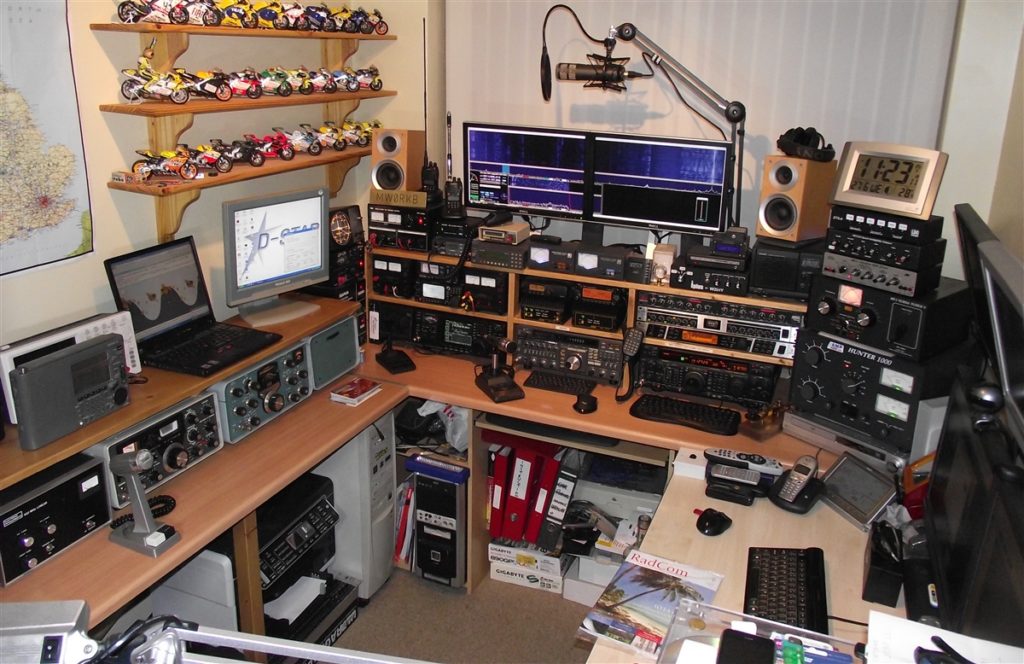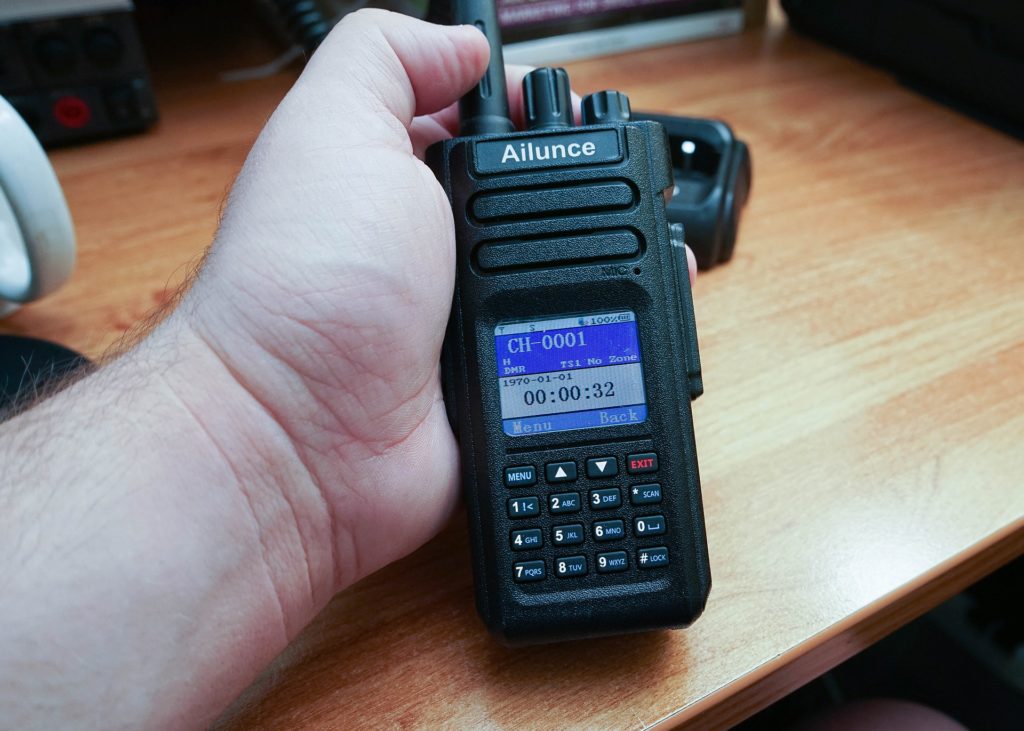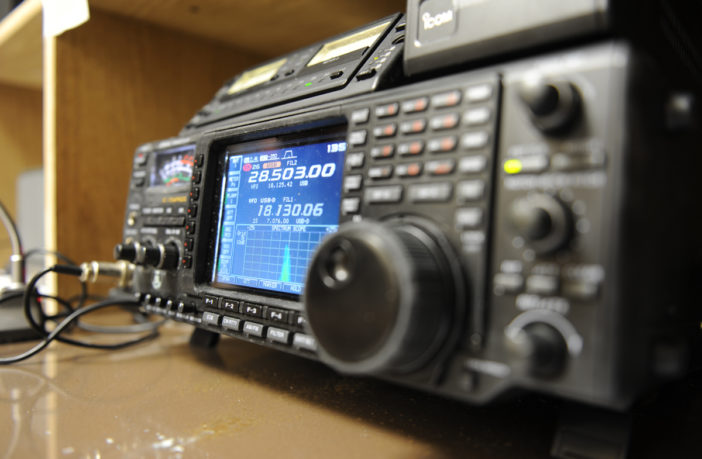You’re in a deadly tornado’s path and can’t get through to 911 because the power is out. The good news is that you have options. Amateur radio (or ham radio) is an alternative means of communication during emergencies.
Although ham radio is a fun hobby for many, instant communication can also save lives. If you live in disaster-prone areas, you will appreciate the importance of contingencies. We can’t wholly depend on our phones or the internet for communication in emergencies.
So, how can an educational and entertaining pastime be so handy in dire situations? Let’s look into the exciting world of amateur radio.
What Is Amateur Radio?
Amateur radio is a technical hobby where people use specific radio frequencies for non-commercial purposes. If you’ve seen the movie 2012, you may recall Charlie Frost broadcasting his end-of-the-world theories. Guess what? That was all thanks to the power of ham radio.
But you don’t have to be a tech expert to use this technology. In fact, there are millions of amateur radio operators around the world communicating directly or via ad-hoc relay systems and amateur satellites without needing an internet connection.
Besides, amateur radio allows anyone to exchange messages via teleprinting, television, voice, telegraphy, etc. And operators manage its frequencies.
How Do Amateur Radios Work?

Firstly, amateur radio is a wireless means of communication. Like every other wireless technology, it uses electromagnetic radiation to send and receive data. This technology can transmit voices, Morse code, and digital data across the world using transmitters, receivers, and antennas.
Electromagnetic radiation travels in the form of a sinusoidal wave. And factors like frequency and wavelength determine the type of electromagnetic radiation in play.
We can classify radio frequencies based on a radio frequency spectrum. This spectrum reserves specific frequency bands for matching radio technologies. For example, maritime radio communications operate in the Very Low Frequency (VLF), while satellite communication uses Extremely High Frequency (EHF).
Ham radio operates in the radio wave spectrum, known for its long wavelength, reaching between 0.4 inches and 62 miles. It uses specific frequencies on the AM radio ranging from 1.6 MHz to 1240 MHz. This range covers two frequency bands: Very High Frequency (VHF) and Ultra High Frequency (UHF).
Below are some common ham radio terminologies and brief definitions:
VHF (Very High Frequency)
VHF lies between the 30MHz to 300MHz radio frequency, with the ham radio band reserved for 144-148MHz. This band is reliable and less susceptible to interference from electrical equipment.
UHF (Ultra High Frequency)
Ultra High Frequencies are higher on the radio frequency spectrum and range from 300MHz to 3GHz. In the same vein, the ham radio band ranges from 420-450MHz. UHF is not as reliable as VHF because it has a shorter wavelength, making it prone to interference.
Receiver and Antenna
A scanning receiver allows you to listen to different radio frequencies on various bands while an antenna receives signals.
Why Do Preppers Need Amateur Radio?

There are different types of radios, but ham is the most recommended for preppers. The reasons are not far-fetched.
Firstly, it can cover a wide range. Irrespective of your location, you can contact anyone anywhere. Secondly, it is less susceptible to interference. So you can transmit essential information with the assurance that the other party would receive it. Thirdly, if other communication lines are down in an emergency, you can still communicate using a ham radio.
To further drive our point home, we’ve compiled a comprehensive list of why preppers need ham radio:
1. Connects with Multiple Radio Types
Ham radio is the most versatile in crossing over into other radio types. It can connect to different radio frequencies but can’t allow those other frequencies to access it. You can also modify amateur radio through software or hardware to gain a wider reach.
But, there are exploitable (illegal!!!) loopholes to cross into other radio frequencies. So we recommend studying FCC regulations before attempting to cross over into another frequency.
2. Necessary for Emergency Situations
Regular radio can only listen to information, but you can send data with ham radios. And this feature is handy in various scenarios.
For example, you will need to know the security and rescue updates during an emergency. But after getting this information, you may also want to relay the message to your friends and family members. And if the communication grid is down, the only way to get through is by using a ham radio.
3. Easy to Use
Ham radio operation is not so easy: it is a technical hobby that requires training and expertise. But preppers can bypass most technical aspects of ham radio usage if they study the necessary info.
Besides, the FCC even allows people who don’t understand morse code to become amateur radio operators. These changes and free online resources make it easier to use the technology. You can even get your license in as few as three days.
4. Affordable
Compared to other radios, ham radios are typically more expensive because of their unique functionalities. The price ranges from $30 to well over $500. However, there are DIY options and used products in the market if you need a ham radio while on a budget.
How to Communicate Using Amateur Radio Frequencies
Communicating via amateur radio can be nerve-wracking if you’ve never used it before. When we transmit over ham radio, it is called “QSD” or “contact.” It can be scary initially, but after a few tries, you will get the hang of it.
So to communicate over ham radio, follow the steps below:
Step 1: Get Your License
It is illegal to use a ham radio without a license, so ensure to do your research before purchasing one. If you are curious about getting a ham radio license, keep reading as we will explain it later in this article.
Step 2: Buy the Proper Equipment
Before using your ham radio, you need some equipment. Many ham enthusiasts may tell you you need a truckload of gear, but you only need the following for a start:
- Transceiver
- Power supply
- Antenna
- Antenna tuner
- Microphone or key
Step 3: Contact
To establish contact, turn on your radio and tune the antenna until the frequency is as close to 1:1 as possible. Ensure that the frequency is not in use by sending “QLR” or saying, “This is (your callsign), is this frequency busy?” If you don’t get a response after asking twice, feel free to use the frequency.
There are many ways to make a QSD, but the most common ones are through morse code (CW), phone (voice communication), and data (RTTY, teletype). Naturally, authorities need to regulate such use of radio to transmit public information.
Before you can make a QSD, you must pass an exam and get a license. So when you combine the technicality of amateur radio with its regulations, you can see why only about six million people use it worldwide.
How to Get Your Amateur Radio License
To get a ham radio license, you must do the following:
1. Get Study Materials
You must pass an exam before getting the license, so best prepare for it. You can either use online resources or physical study materials to guide you while preparing.
There are three types of licenses:
- Technician — this license allows you to operate on a limited range of frequencies. You can only transmit 100 watts.
- General — it allows you to operate on a broader range of frequencies. You can transmit 1500 watts.
- Extra — it allows you to operate on all ham radio bands, and you can transmit 1500 watts.
As a prepper, the technician license allows you to communicate with anyone in the world, so that’s all you need.
2. Take the Exam
The ARRL (Amateur Radio Relay League) website has a section that advertises ham radio exams in your area. There is no online exam, so you must go down to the exam center and sit for a physical exam. But ensure that you email the examiner before going.
Here is a list of requirements when going for the exam:
- Two sharpened pencils
- A pen
- $20
- Legal photo ID (passport or driver’s license)
If you don’t have any, you can bring two copies of any of the following: your social security number, utility bill, or library ID card.
After you pass the exam, you can get the necessary equipment required to use a ham radio and have yourself a splendid time!
Can You Listen Without a License?
Many people shy away from using a ham radio because of the rigors of studying for its license. But if you are an enthusiast, you can listen to one without a permit. The only difference between you and a licensed prepper is that they can send information on ham radio.
If you don’t have a license, don’t fret; there are several ways you can interact with your ham radio:
- FM Radio: you can use the ham radio to listen to music, news, programs, etc.;
- Emergency weather: you can use it to listen to live weather broadcasts;
- Local amateur radio transmissions.
Conclusion
Amateur radio is more than a random pastime; it’s essential for preppers. You can use it in emergencies to transmit vital information or get in touch with rescue agents. Anyone can own a ham radio, but you need a license to enjoy its full potential.
If you’ve carefully gone through this guide, congratulations, you’re more prepared for emergencies than you were 10 minutes ago. Even if you aren’t a prepper, you should get a ham radio as it’s an exciting technical hobby to try out. And if you live in disaster-prone areas, it is an essential part of your survival kit.

No comments:
Post a Comment